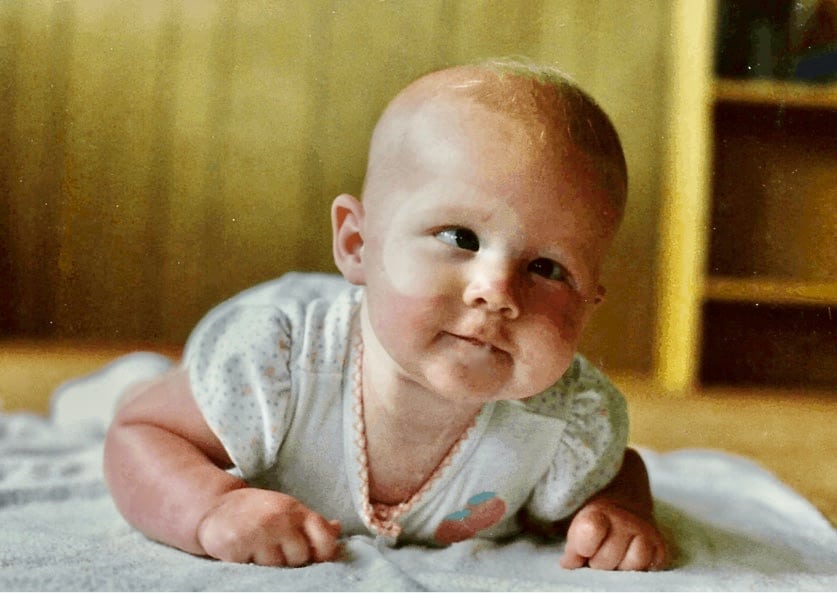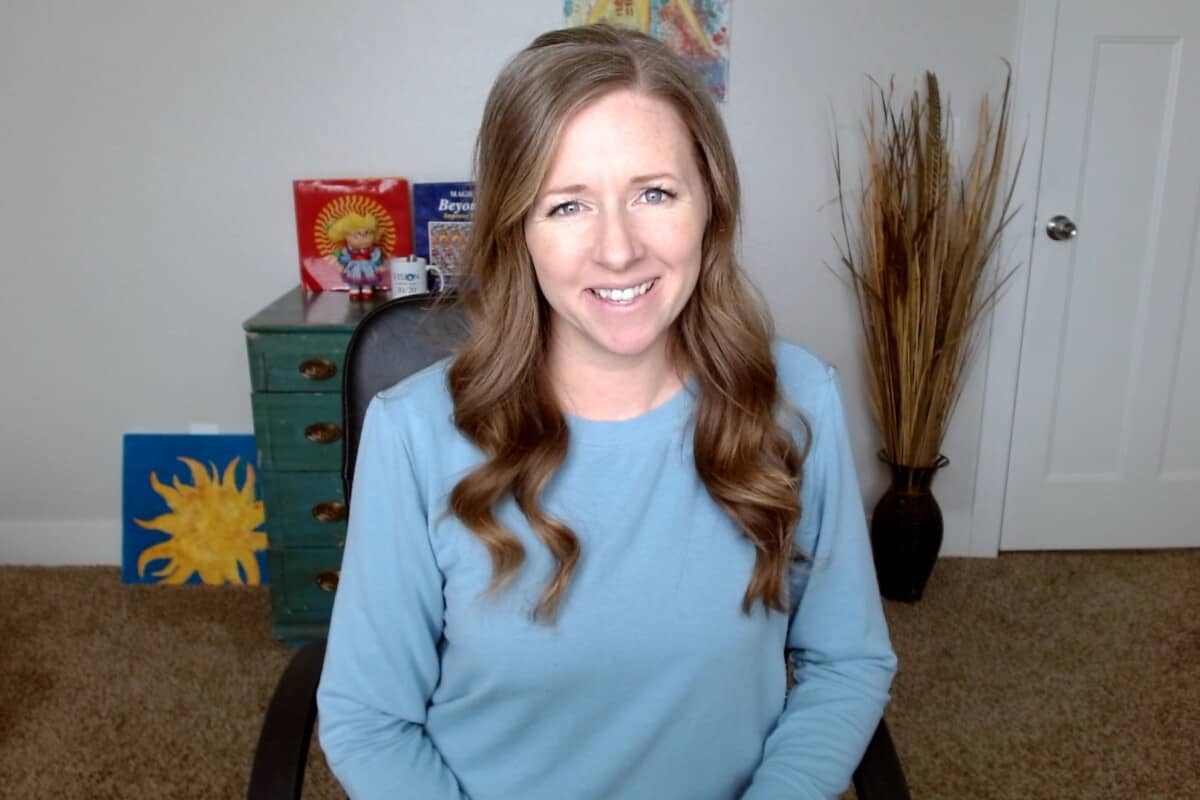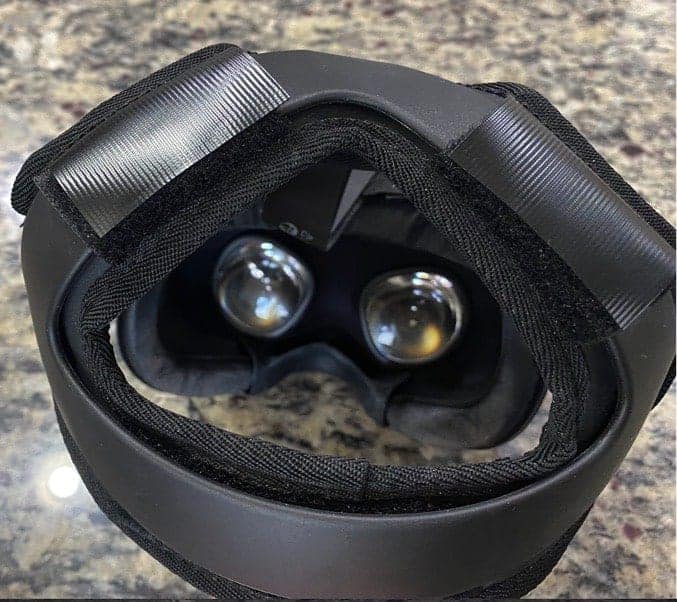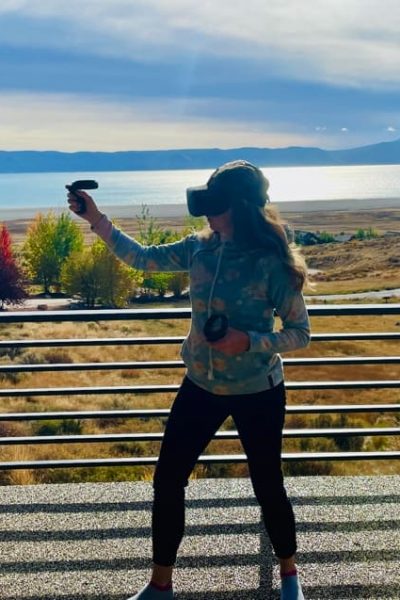I was born with strabismus, an eye turn, and amblyopia, or lazy eye. In my adult life, I felt plagued by the way my eyes looked and the way that they worked (or didn’t work).
I have spent the last several years researching different products to help fix my eye problems and virtual reality has definitely been one that I have found helpful!
So the big question, Will Virtual Reality Fix Strabismus or Lazy Eye? Because VR technology can isolate what each eye is seeing, it provides a perfect set up for fixing a lazy eye or strabismus. BUT, this won’t occur with traditional apps. You must use the apps specifically developed to retrain the brain to use both eyes simultaneously.
Lucky for you, there are plenty of apps to choose from.
While the short answer is, “yes, virtual reality can be used to treat a lazy eye or strabismus,” let’s take a deeper look into why strabismus or lazy eye occurs, how virtual reality can help and which specific programs are designed for these conditions.
Why Do Strabismus and Amblyopia, Lazy Eye, Exist?

I was born with strabismus (esotropia) that created amblyopia. It was “fixed” with patching, glasses and 3 surgeries.
Learn more about my story

The amblyopia was mostly corrected, but the eye turn got much worse as I got older.

Through vision therapy, including virtual reality, and surgery, my eyes are now very close to being straight and I have much better depth perception.
Strabismus and amblyopia are conditions of the eyes where the brain is not using and interpreting the information coming in through each eye very effectively.
Some people have a combination of the two, others have one or the other.
Many are born with the condition and it is considered genetic, others develop it later in life due to a concussion, brain injury or a host of other scenarios.
Let’s look at the main pain points for each one.
Strabismus
- Nicknames: Crossed Eyed, Wall Eyed, Squint
- The eyes point in different directions
- Many times the brain ignores one eye to stop double vision, this can lead to amblyopia.
- The brain doesn’t use the input from both eyes simultaneously.
- Limited or complete lack of stereo vision or depth perception.
Amblyopia
- Nickname: Lazy Eye
- Usually one eye (can be both) is much weaker than the other and cannot be fully corrected with glasses.
- Eyes can be straight or misaligned
- Pathways between the brain and eye aren’t functioning correctly
- Limited or complete lack of stereo vision or depth perception.
The most important thing to understand is that both strabismus and amblyopia are problems with the brain.
With strabismus, the largest hurdle is getting the brain to use both eyes at the same time so that they can both be straight without double vision. This must be learned.
With amblyopia, the biggest hurdle is that what the eyes are seeing is SO different, it is very challenging for the brain to use both images together.
You can learn more about how your eyes are or are not working together by taking this free quiz: “Do My Eyes Work Together?”
How Does Virtual Reality Treat Strabismus and Amblyopia?
Virtual reality can solve for these issues in a very unique and effective way.
In virtual reality, each eye basically has it’s own mini TV screen that it can see. In most virtual reality games, each eye just sees slightly different views of the exact same scene or game, mimicking real life so that the game feels real.

In apps designed to help treat strabismus or amblyopia, the developers adjust and change what each eye sees to help encourage and train the brain to use both eyes equally.
There are 3 main areas that apps make adjustments to treat strabismus and amblyopia, lets take a look below.
Blur and Contrast
In a game or movie in VR, the screen for the strong eye can be blurred while the screen for the amblyopic eye can have contrast added. This encourages the weak eye to see, but also allows both eyes to work together still.
It’s like patching but WAY more effective and WAY more fun.
Dichoptic Games
Games are adjusted so that each eye only sees one part of the game. For example, in ping pong, one eye can see the ball while the other sees the paddle, but both eyes can see the table and room. There are hundreds of variations.
This gives the brain a safe environment to use both eyes together.
Prism
If an eye turn is present, the pictures on each screen can be adjusted so that one is straight ahead, and the other is moved up, down, left, or right depending on the eye turn so that both eyes are looking at the same image.
This can help the brain learn to fuse and gain stereo vision.
Technology is amazing! These unique program designs make VR an extremely effective tool for treating strabismus and amblyopia, but these settings aren’t available in every single game.
I am waiting for the day when Oculus comes out with similar settings that can be changed on the device for any game!
Until then, I focus on the apps and programs developed by optometrists and ophthalmologists that are scientifically proven to improve vision.
Which Programs and Apps Are Designed to Fix Strabismus and Amblyopia?
There are a few apps designed for vision therapy to help overcome strabismus or amblyopia. Each has pros and cons and most must be used through a licensed optometrist or ophthalmologist.
Vivid Vision

Features multiple games, tests and exercises that are designed to treat strabismus, amblyopia, and other eye problems.
Vivid vision uses blur, contrast, dichoptic games, prism and more to achieve this.
Optics Trainer

Very similar to Vivid Vision but it doesn’t have any tests, not quite as many settings and there are fewer games.
While less specialized, It can accomplish the similar results and is less expensive.
Equal Eyes

This app has unique games, exercises and similar controls to the others, but it can be purchased without an optometrist. It is still in the development stage, but keeps getting better! Only for those in VT already.
Once your brain has learned to use both eyes through these medical apps, normal apps can become a form of exercise and therapy to keep both eyes working together. This article explains one of my favorites, Gravity Sketch.
Luminopia is an up and coming VR app in the ophthalmology world as a replacement for patching.
There is a large library of movies and TV shows that can be watched with blur/contrast differences to help treat strabismus and amblyopia. It is usually prescribed through an ophthalmologist or eye surgeon.
Learn more HERE.
Conclusion
There are hundreds of eye exercises that aim to correct strabismus and amblyopia and each of them has something great to offer.
Virtual reality, if used with the right apps and programs, can take several exercises and combine them into one comprehensive experience that make a profound difference on vision.
It was through virtual reality that I was able to start seeing in 3D in real life. It isn’t a substitute for vision therapy, but it is an amazing way to use technology to create ideal circumstances for the brain to learn to see with both eyes.

Related Questions
What is the Best VR Headset for Treating Strabismus? For working with strabismus or amblyopia, using the Oculus Quest 2 is the best option. It is light weight, affordable, has amazing graphics and works with all major apps.
How Can I Download VR Vision Therapy Apps? In order to download these app, you must go through an Optometrist or Ophthalmologist. If you need help finding one, schedule a consult with me and I can get you started. CLICK HERE
